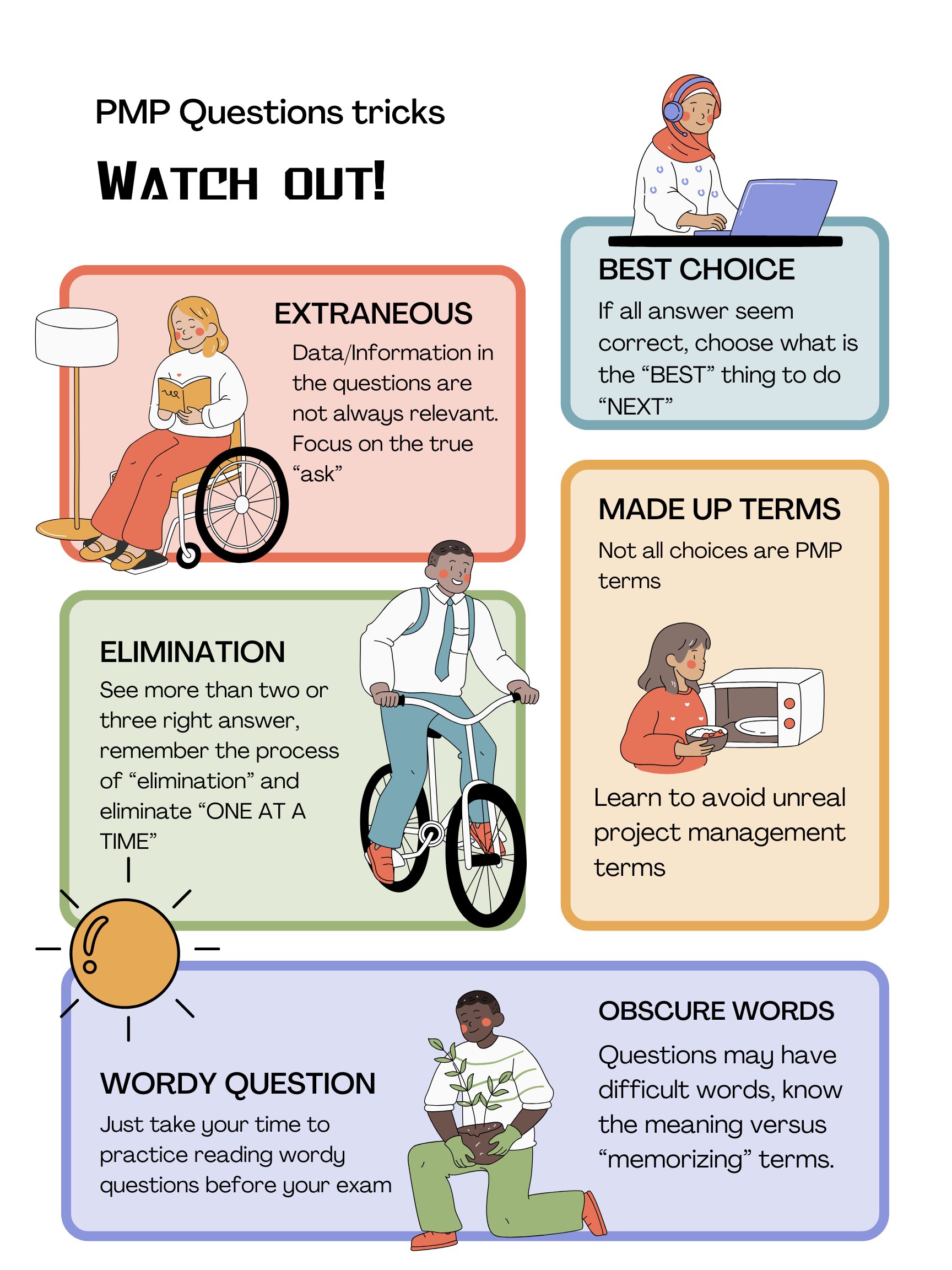
10 Tips to Outsmart PMI’s Exam Strategies
The Project Management Professional (PMP) exam is a challenging milestone for project managers worldwide, not just for its breadth but also for the unique twists PMI (Project Management Institute) incorporates into the test. Being prepared goes beyond just memorizing the PMBOK Guide; you need a strategic approach to tackle the subtle traps and techniques PMI uses. Here’s how you can gain an edge:
1. Understand PMI’s Question Structure
PMI often uses situational questions to test not just knowledge, but real-world application. These questions typically describe a project scenario and ask what you would do next. PMI expects answers aligned with best practices in the PMBOK Guide, not necessarily what you might do in your day-to-day projects. Always think like PMI while answering.
Pro Tip: Look for keywords like “next,” “best,” or “most appropriate,” as they guide you to the essence of the question.
2. Know the Stakeholder-Centric Focus
PMI places significant emphasis on stakeholder management, as a project’s success is often tied to stakeholder satisfaction. When in doubt during the exam, prioritize solutions that reflect good communication, empathy, and stakeholder engagement.
Pro Tip: If you’re unsure between two answers, choose the one that focuses more on involving or satisfying stakeholders.
3. Beware of Distractors
PMI includes distractors—answers that seem correct but aren’t the best according to the standards. These options often rely on common misconceptions or project-specific thinking rather than PMI practices. Carefully read the question and evaluate each option against PMI’s perspective.
Pro Tip: Eliminate obviously incorrect choices first, then focus on picking the best answer among the remaining ones.
4. Memorize Key Formulas and Concepts
While the new PMP exam is less formula-focused, you’ll still encounter quantitative questions, particularly in areas like Earned Value Management (EVM). Knowing formulas like SPI, CPI, and critical path calculations is essential.
Pro Tip: Practice solving numerical questions under time constraints. Use flashcards to memorize formulas and understand their application in context.
5. Practice Time Management
The exam contains 180 questions to be completed in 230 minutes. PMI uses a mix of multiple-choice, hotspot, and drag-and-drop questions. Without effective time management, you risk rushing the last set of questions.
Pro Tip: Allocate no more than 75 minutes for each set of 60 questions, leaving enough time to review flagged items. Practicing mock exams with timed conditions is critical.
6. Master Agile and Hybrid Methodologies
A significant portion of the PMP exam now covers Agile and hybrid project management approaches. Be familiar with the Agile Manifesto, key ceremonies, and roles like Scrum Master and Product Owner. PMI values the ability to blend Agile principles into traditional project management when needed.
Pro Tip: Focus on understanding when and why to apply Agile or hybrid approaches rather than just memorizing frameworks.
7. Use the Process of Elimination
For tricky questions, the process of elimination is your best friend. Even if you’re unsure, eliminating one or two answers increases your odds of guessing correctly.
Pro Tip: PMI rarely endorses punitive approaches like firing a team member or skipping stakeholder communication—so you can often rule out answers suggesting those actions.
8. Take Advantage of Breaks
The exam allows two 10-minute breaks, which can be a game-changer. Use these breaks to reset, refocus, and manage stress. Staying calm and collected is key to maintaining performance throughout the exam.
Pro Tip: Use your breaks to hydrate, stretch, and clear your mind. Don’t overanalyze questions during this time.
9. Simulate the Exam Environment
Practicing mock exams in a simulated environment helps build your stamina and familiarize you with the test format. Ensure your mock exams reflect the same blend of situational, Agile, and traditional PM questions you’ll encounter.
Pro Tip: Use reputable sources like PMI’s practice exams or those from trusted providers aligned with the PMP Exam Content Outline (ECO).
10. Always Choose the Proactive Approach
PMI values proactive project management over reactive solutions. Answers that reflect planning, stakeholder engagement, and prevention of issues are usually favored over those addressing problems after they occur.
Pro Tip: If two answers seem plausible, pick the one that focuses on anticipating and mitigating risks over fixing problems retrospectively.
Preparing for the PMP exam involves more than just studying; it requires understanding PMI’s unique perspective and exam strategies. By applying these tips and tricks, you’ll be better equipped to navigate PMI’s challenges and succeed on exam day. Remember, practice and a calm mindset are your best allies. Good luck!
If you are prepping for your PMP exam, don’t forget to take a quick look at the following posts as well:
